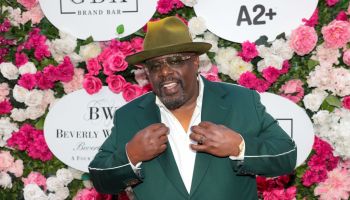Chicago has been a hotbed of violence since the days of Al Capone and Johnny Torrio, but even the notorious St. Valentine’s Day Massacre is a candle in the sun compared to the violence currently plaguing the city.
This time last year, 174 people were murdered in Chicago. As of today, 240 people died in Chicago. Compare that to the 214 people that died in Afghanistan and you see we have a problem.
STORY: Just Staggering! Homicides In Chicago Increase 38 Percent
The majority of the killers are gang members. Surprisingly enough, when gangs first entered the Chicago ghettos they intended to uplift them, not destroy them. What happened?
Before you find out how gangs evolved, you need to know why gangs exist. According to the father of gang research, Frederic Thrasher, gangs are a by-product of the social disorganization and weakness of social institutions like schools, health care and employment. Thrasher believed all ethnic groups would assimilate into society and gangs would be eliminated. He was dead wrong about the last part.
In the early 1900s, the sociopolitical climate of Chicago was one of great ethnic tension caused by competition for jobs amongst the new ethnic groups coming into the city during the great migration.
All of them were segregated. The African American and Latino minorities stayed segregated. The European minorities such as the Italians and Irish did not.
When the European minorities were forbidden access to the American Dream, they decided to form gangs and force their way into the melting pot. During the prohibition era, Al Capone acted as the head of a network of white neighborhood gangs, which later became what is called the “Outfit.” Chicago had the nation’s highest rates of violence as reformers attempted to destroy the bootleggers, but failed.
By the 1950s, most white ethnic gangs had faded away, their members finding jobs through patronage in the Democratic machine; or often the biggest gang minorities see every day: the police.
While the Europeans were experiencing their first legitimate taste of prosperity in America as “one of the club,” African Americans and Latinos continued to be attacked by the U.S government.
Rather than promote integration as had occurred with white ethnic groups, the Chicago Democratic Party, led by former gang member Richard J. Daley, planned to continue segregation. To block westward movement of African Americans, Bridgeport, an expressway and an 18-tower housing project served as a wall of segregation.
Faced with immeasurable odds, African Americans and Latinos still strived to be apart of the American Dream and obtain all of the benefits promised by it. So they started to form their own gangs, which acted as neighborhood protectors from those who wished to harm the community, and social activists.
Many gangs formed legitimate social and economic organizations, including a variety of educational programs. The Vicelords ran alternative schools and started businesses in Lawndale, The BlackStone Rangers built a controversial job training program with educational components. The Latin Kings was started by a group of individuals of Hispanic descent to rise above the racism and create an organization to better themselves and their communities.
But by the late 1960s, the Chicago government decided it was time to eradicate gangs from the city as mayor Daley and State Attorney Hanrahan declared “A War On Gangs.” The ensuing repression sent gang members flooding into the prisons.
Poor education, lack of job opportunities, and jailing of previous gang members caused the gangs to reorganize. Leaders like David Barksdale, who founded the Black Disciples, and Larry Hoover, who founded the Black Gangsters, united their gangs. The newly formed Black Gangster Disciple Nation rebuilt themselves as a business enterprise.
As the industrial world drifted into memory, the crack epidemic created unprecedented business opportunities for the gangs. Larry Hoover initiated what he called the “new concept,” which basically brought a business model to the BGDN. Other gangs followed suit and the business of drugs became the business of gangs.
From then on, gangs have been destroying the communities they inhabit. History shows that if anybody is to blame, it’s those in power who deny members of poverty stricken communities access to the opportunities to the same life that they send the impoverished overseas to fight and die for.
When you grow up and you see that there is no opportunity for you to live what society calls a decent life. When you grow up in an environment where the schools are better suited to provide you a meal, that your parents can’t afford, than an education. When you grow up and you see that the very country you live in says your life is completely worthless – joining a gang doesn’t seem like such a bad idea. Especially when you see the U.S Army, the biggest gang in the world, uses the same methods and hierarchy.
If we all pull together to ensure that we all have the same access to the American Dream, we can end this inner city warfare.
–Garvey Ashhurst Follow Me On Twitter
Garvey Ashhurst is a young up and coming poet, songwriter, and blogger. He is the reason that the system is afraid of a black man in a library. His aim is not to be Martin Luther King, Malcolm X, or Ghandi, but he hopes to make them proud by keeping their ideals alive through his lifestyle. He hopes that one day young brothers will one day say I want to be the next him.
[pagebreak]
Larry Hoover: Co-founder of Gangster Disciples
[pagebreak]
David Barksdale: Co-founder of Gangster Disciples
[pagebreak]
Al Capone: Replaced Johnny Torrio as the head of a network of neighborhood gangs, which later became what is called the “Outfit.”
















